Berry Smart: A Farmers Market Guide to Berries
Foodwise Staff
May 2, 2025
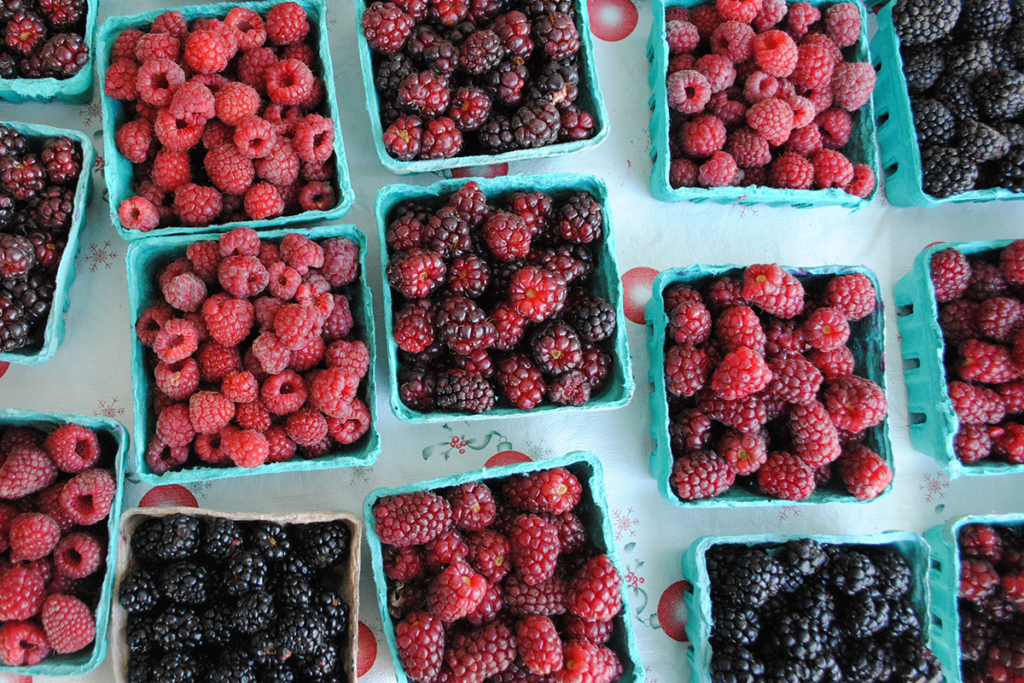
What do strawberries, blueberries, and blackberries have in common? Besides having “berry” in the name and making a delicious base for pies and jams, not a whole lot, at least on paper.
Botanically speaking, a berry is a fleshy fruit that contains many seeds and is produced from a single ovary. Blueberries fit the bill (as do persimmons, avocados, and watermelons, which won’t be covered here). Strawberries and blackberries are not botanical berries, but they are berries in the culinary sense (more on this below). Many of these fruits are readily available at grocery stores year-round, either frozen or imported. But as anyone who has bit into a bland and watery strawberry knows, berries are best enjoyed freshly harvested at their seasonal peak.
For Poli Yerena of Yerena Farms in Watsonville, the Central Coast provides the ideal conditions for growing delicious strawberries, blackberries, and raspberries. “First, it helps to have sandy soil, because the fruit takes the minerals up,” he says. “Second, because we’re close to the ocean, it’s foggy most of the time. It takes longer for the berries to get ripe, which gives them good flavor.”
Here’s a guide to some of the locally grown berries you’ll find at the farmers market in the spring and summer. Due to their delicate flesh and short shelf life, some of these berries can only be found at the farmers market, so savor them in their juicy glory while you can. Stop by the orange Seasonal Spotlight tent this month for samples, recipes, and cooking tips on creative ways to enjoy berries, and be sure to celebrate the bounty of berries with us at the Berry Bash on Saturday, May 31.
Find Delicious Berries at These Farms at Foodwise Farmers Markets
Blue House Farm | Dirty Girl Produce | Eatwell Farm | Frog Hollow Farm | Green Thumb Farms | Lonely Mountain Farm | Lucero Organic Farms | McGinnis Ranch | Oya Organics | Rainbow Orchards (returning in July) | RHJ Farms | Sierra Cascade Blueberry Farm (returning in June) | Sunshine Organics | Triple Delight Blueberries | Very Mulberry | Yerena Farms
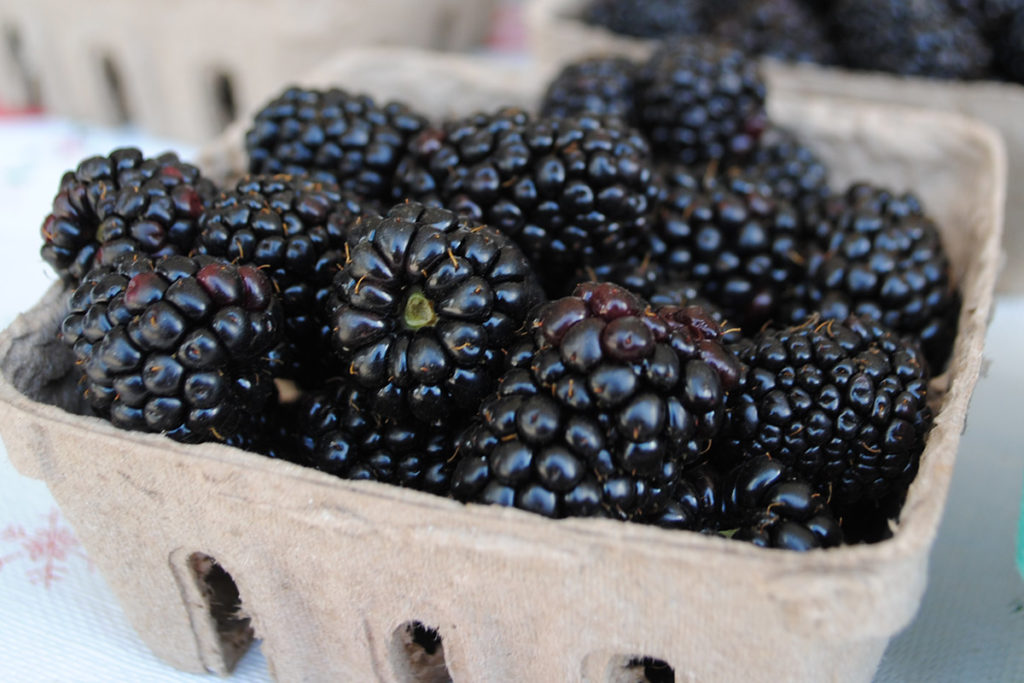
Blackberries are aggregate fruits (meaning they are clusters of “drupelets,” or tiny stone fruit, hence the tiny seeds), rather than true botanical berries. Larger and juicier than raspberries, blackberries are a sweet-tart treat for out-of-hand snacking as well as preserve making. While raspberries are hollow on the inside after being harvested, blackberries retain the little cone-like stem (“torus”) when picked. Blackberries are nutritional powerhouses, high in anthocyanins and fiber. In addition to getting them at the farmers market starting in late spring, you can also find them growing wild all around the Bay Area in mid to late summer. Forage away, but watch out for thorns! Look for them May through November.
Recipe to try: Berry Platter with Labneh and Orange Oil, by Yotam Ottolenghi, Ixta Belfrage, and Tara Wigley, Ottolenghi Flavor
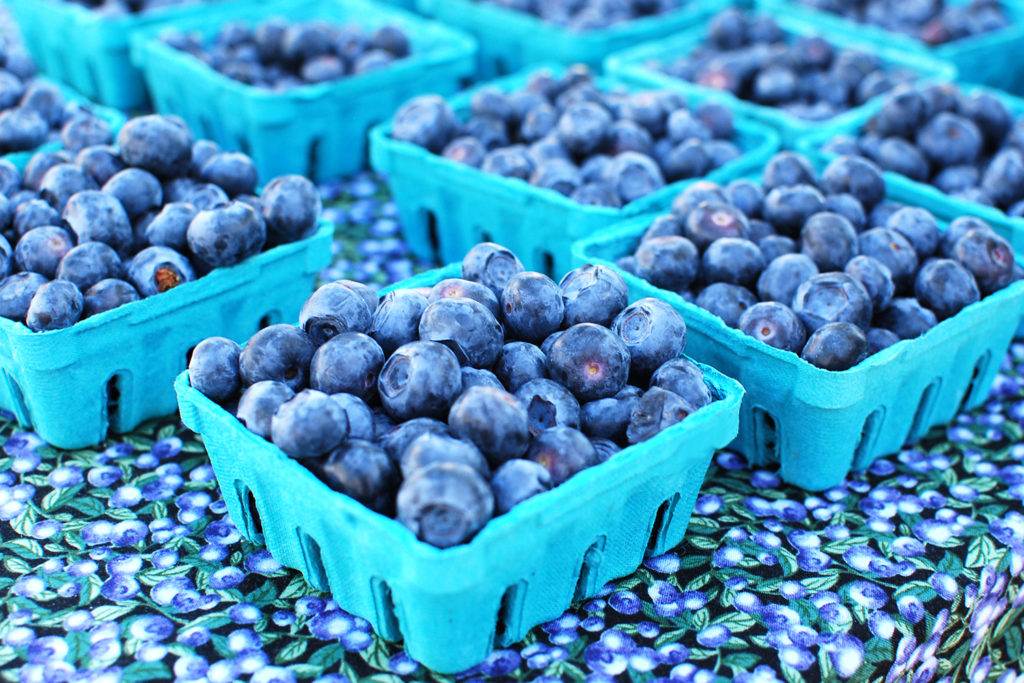
This is the only true berry in the bunch. One of the few fruits native to North America, wild blueberries were originally gathered by Native Americans, and today the U.S. leads the world in blueberry production. Hailed as a superfood high in antioxidants, blueberries have grown in popularity in recent years, but you can only get them fresh and local from May through August. Keep an eye out for Triple Delight Blueberries’ rare Pink Lemonade variety, with its striking pink color.
Recipe to try: Blueberry-Ginger Beet Sour by Kathryn Lukas, Farmhouse Culture Guide to Fermenting
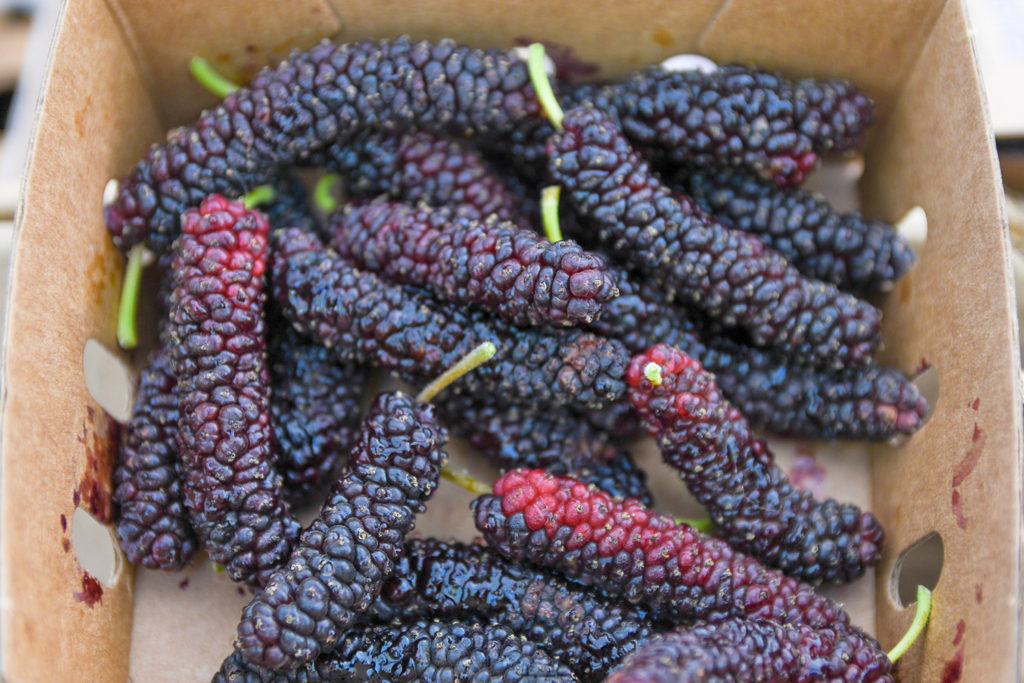
Though they resemble elongated blackberries, mulberries belong to the same botanical family as figs and grow on trees, not on canes. These intensely flavored deep purple-red berries are difficult to pick and are only harvested when perfectly ripe. They can also be fermented to make wine. Find them at the farmers market May through June.
Recipe to try: Mulberry Lassi by Very Mulberry

If your head is swimming with bramble berry crosses by now, here’s one more delicious one to remember. Perfect for jams and pies, the olallieberry is a cross between a loganberry and a youngberry (blackberry-dewberry cross). Keep an eye out for olallieberries in June and July.
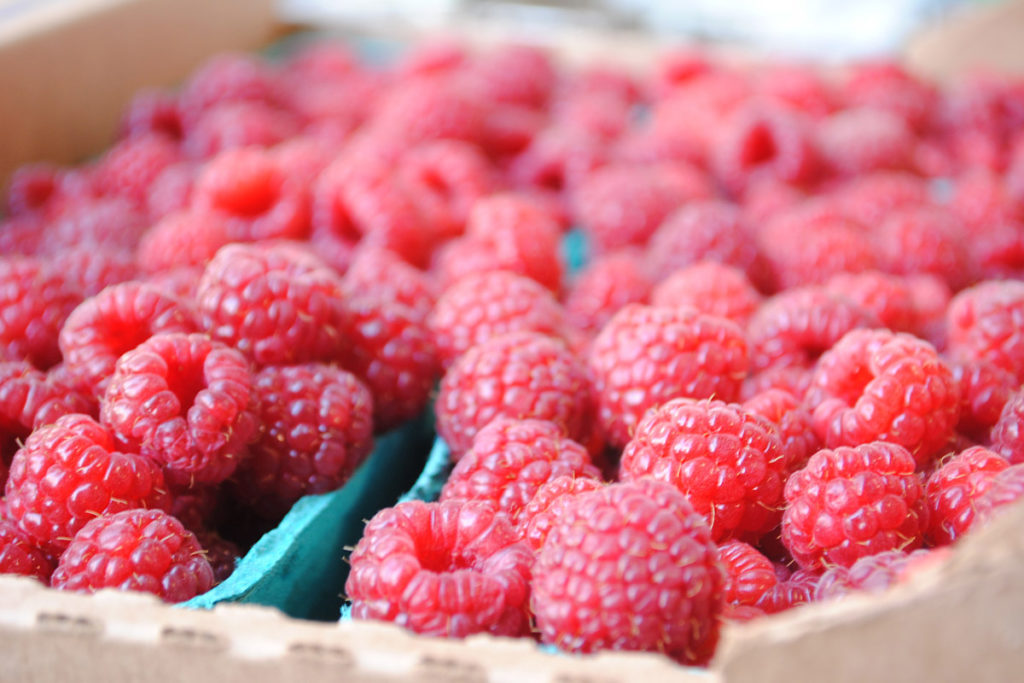
Known as cane berries or bramble berries, raspberries, blackberries, and their ilk are also relatives of the rose. They grow on thorny stalks, though many modern cultivars have been bred to be thornless. Raspberries are actually aggregate fruit, not botanical berries. Most commonly red, raspberries can be found in a range of hues, from gold to purplish black. Look for them at the farmers market May through November.
Recipe to try: Summer Fruit Cobbler by Anna Derivi-Castellanos, Three Babes Bakeshop
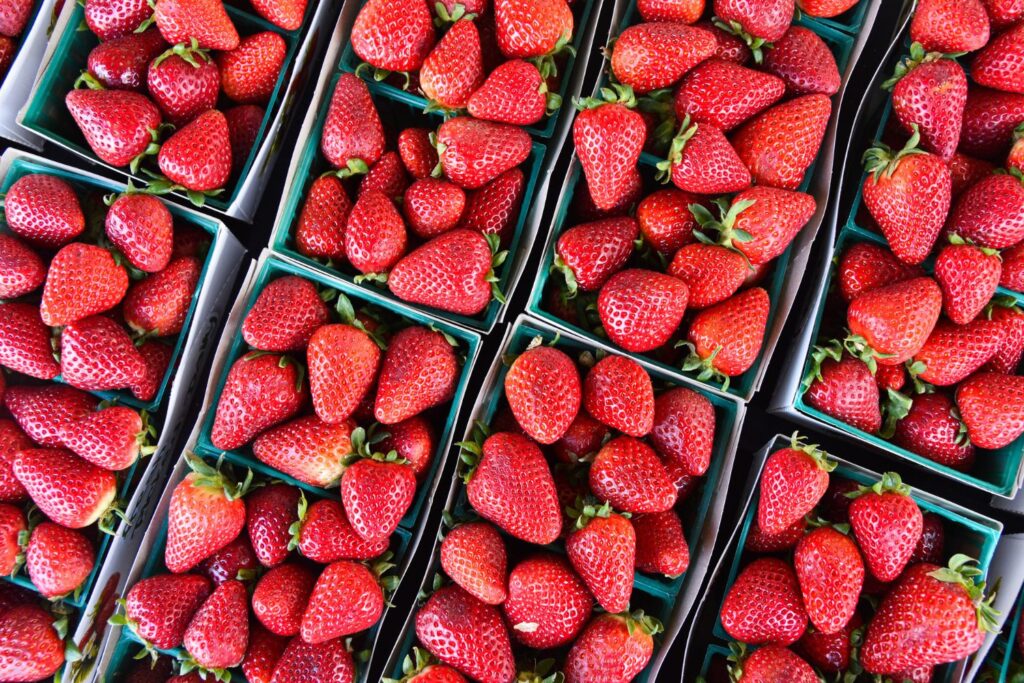
Not a true berry in the scientific sense, the strawberry is a member of the rose family (Rosaceae) and an “accessory fruit”—a fleshy holder for the actual fruits, which are the crunchy seed-like nodules (“achenes”) that dot the surface. Strawberries should be harvested fully ripe, since they don’t ripen after picking. Popular varieties include Albion, Chandler, Éclair, and Seascape. The small Mara des Bois variety, found at Yerena Farms, are especially delicate and sweet. Strawberries are typically in season at the farmers market April through November.
Recipe to try: Strawberry Vinaigrette by Naomi Webb, Foodwise Staff
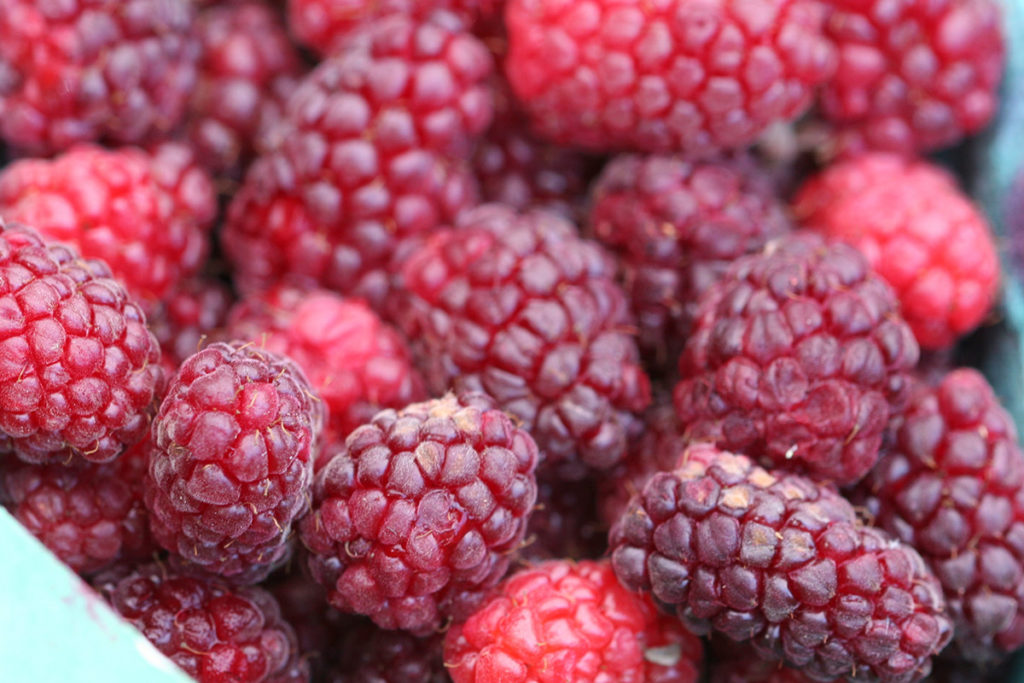
Another hybrid, the tayberry is sweeter and larger than the raspberry, and is generally only available at farmers markets, due to its fragility. Because the plants have thorns, they are also tricky to pick. Farmer Poli Yerena describes them as a blackberry with raspberry flavor. Tayberry season is usually in the summer, June through August.
Seasonal Spotlight
Foodwise’s Seasonal Spotlight program shines a light on the best produce that California farms have to offer at our farmers markets. Join us for free samples, cooking demos, and festivals to celebrate a different peak-season produce item each month. See upcoming events.
This article was updated from a previously published version.
Topics: Fruit, Produce guides, Seasonal
